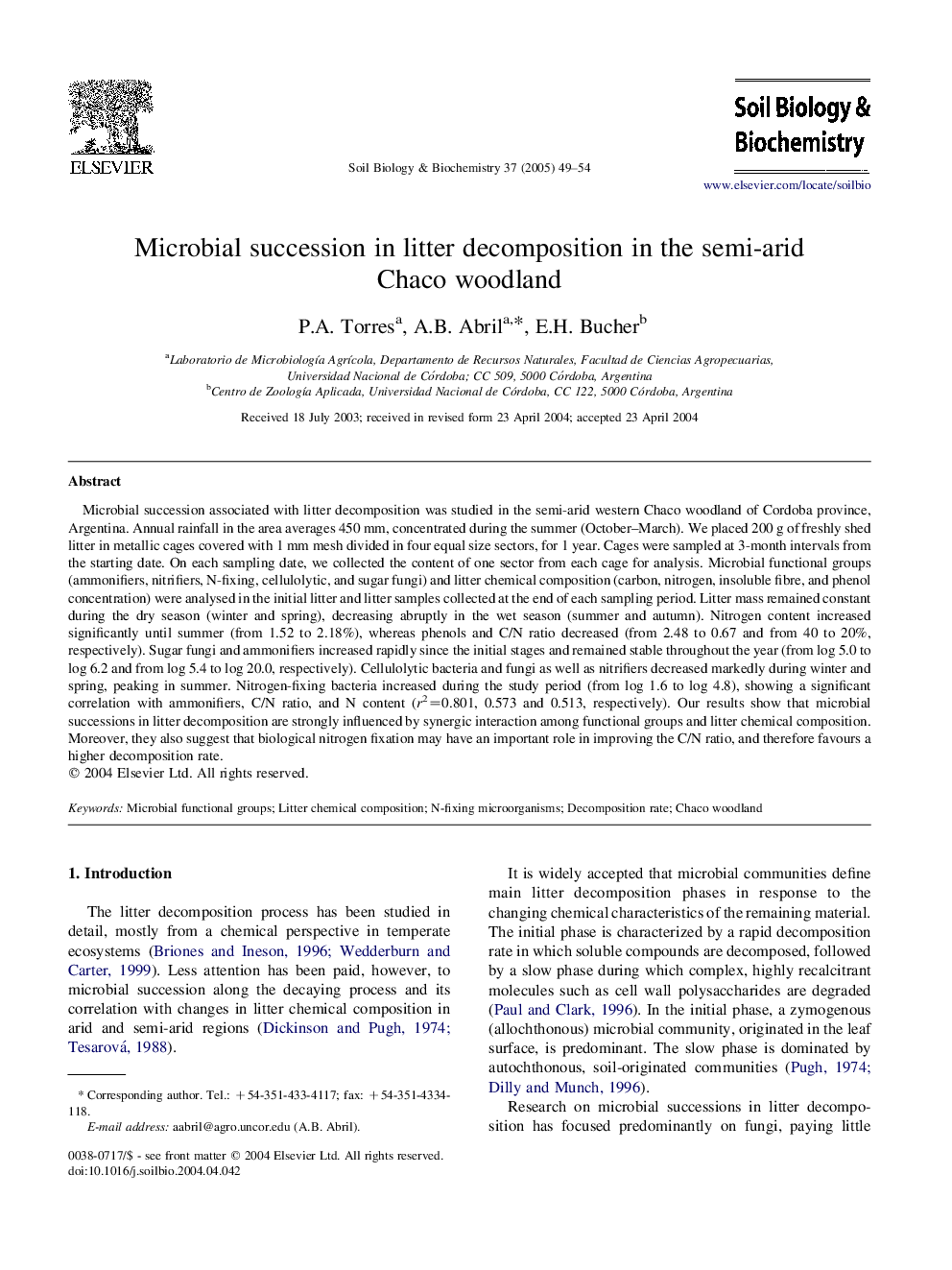| Article ID | Journal | Published Year | Pages | File Type |
|---|---|---|---|---|
| 10846423 | Soil Biology and Biochemistry | 2005 | 6 Pages |
Abstract
Microbial succession associated with litter decomposition was studied in the semi-arid western Chaco woodland of Cordoba province, Argentina. Annual rainfall in the area averages 450Â mm, concentrated during the summer (October-March). We placed 200Â g of freshly shed litter in metallic cages covered with 1Â mm mesh divided in four equal size sectors, for 1 year. Cages were sampled at 3-month intervals from the starting date. On each sampling date, we collected the content of one sector from each cage for analysis. Microbial functional groups (ammonifiers, nitrifiers, N-fixing, cellulolytic, and sugar fungi) and litter chemical composition (carbon, nitrogen, insoluble fibre, and phenol concentration) were analysed in the initial litter and litter samples collected at the end of each sampling period. Litter mass remained constant during the dry season (winter and spring), decreasing abruptly in the wet season (summer and autumn). Nitrogen content increased significantly until summer (from 1.52 to 2.18%), whereas phenols and C/N ratio decreased (from 2.48 to 0.67 and from 40 to 20%, respectively). Sugar fungi and ammonifiers increased rapidly since the initial stages and remained stable throughout the year (from log 5.0 to log 6.2 and from log 5.4 to log 20.0, respectively). Cellulolytic bacteria and fungi as well as nitrifiers decreased markedly during winter and spring, peaking in summer. Nitrogen-fixing bacteria increased during the study period (from log 1.6 to log 4.8), showing a significant correlation with ammonifiers, C/N ratio, and N content (r2=0.801, 0.573 and 0.513, respectively). Our results show that microbial successions in litter decomposition are strongly influenced by synergic interaction among functional groups and litter chemical composition. Moreover, they also suggest that biological nitrogen fixation may have an important role in improving the C/N ratio, and therefore favours a higher decomposition rate.
Keywords
Related Topics
Life Sciences
Agricultural and Biological Sciences
Soil Science
Authors
P.A. Torres, A.B. Abril, E.H. Bucher,
